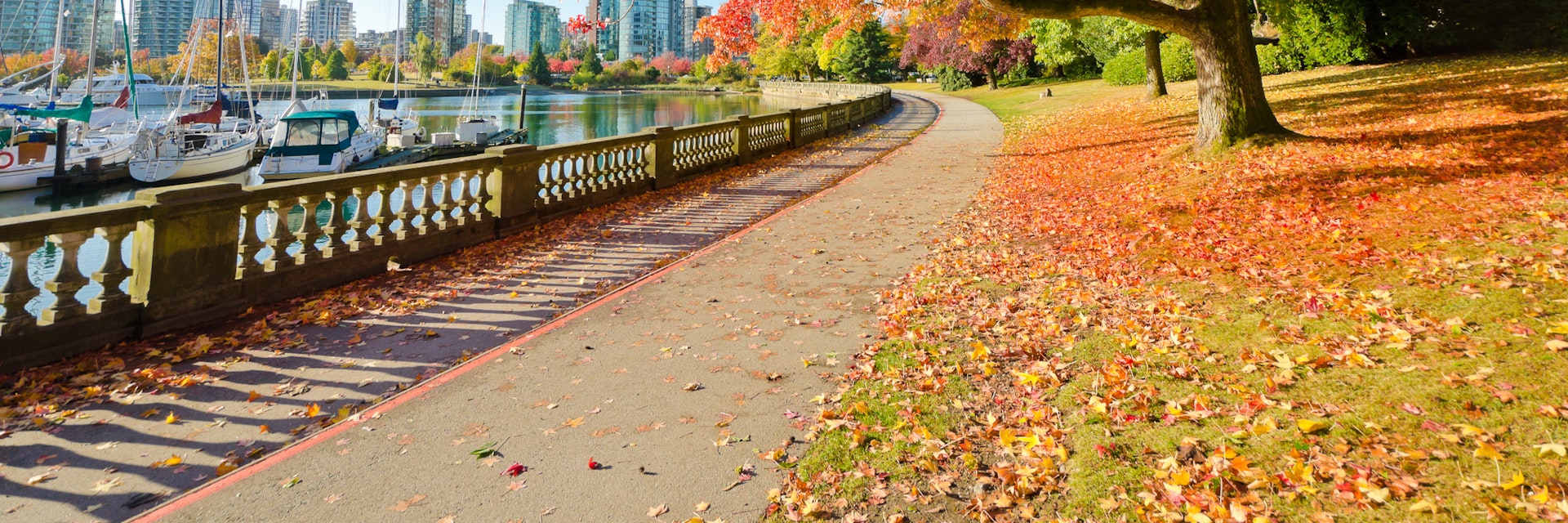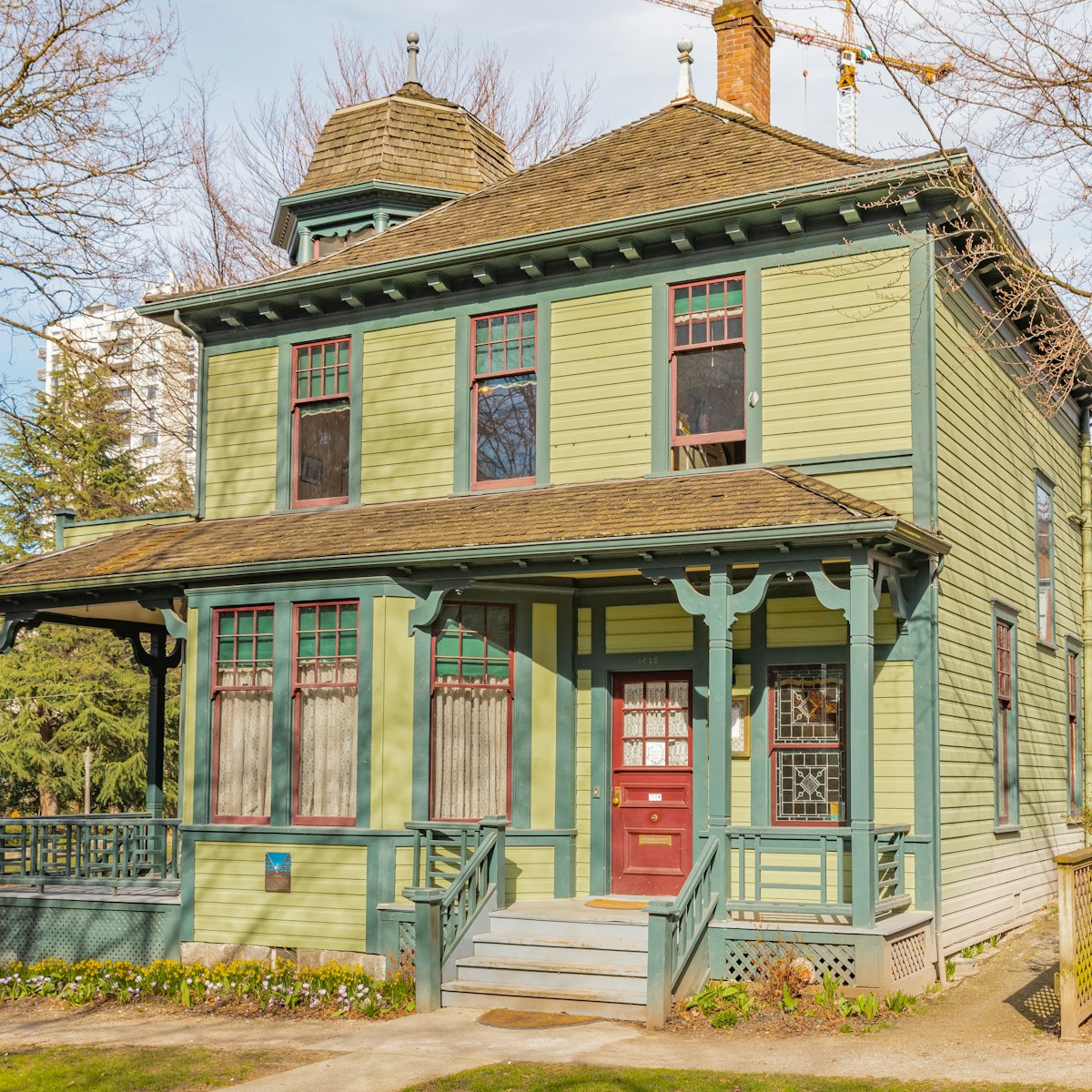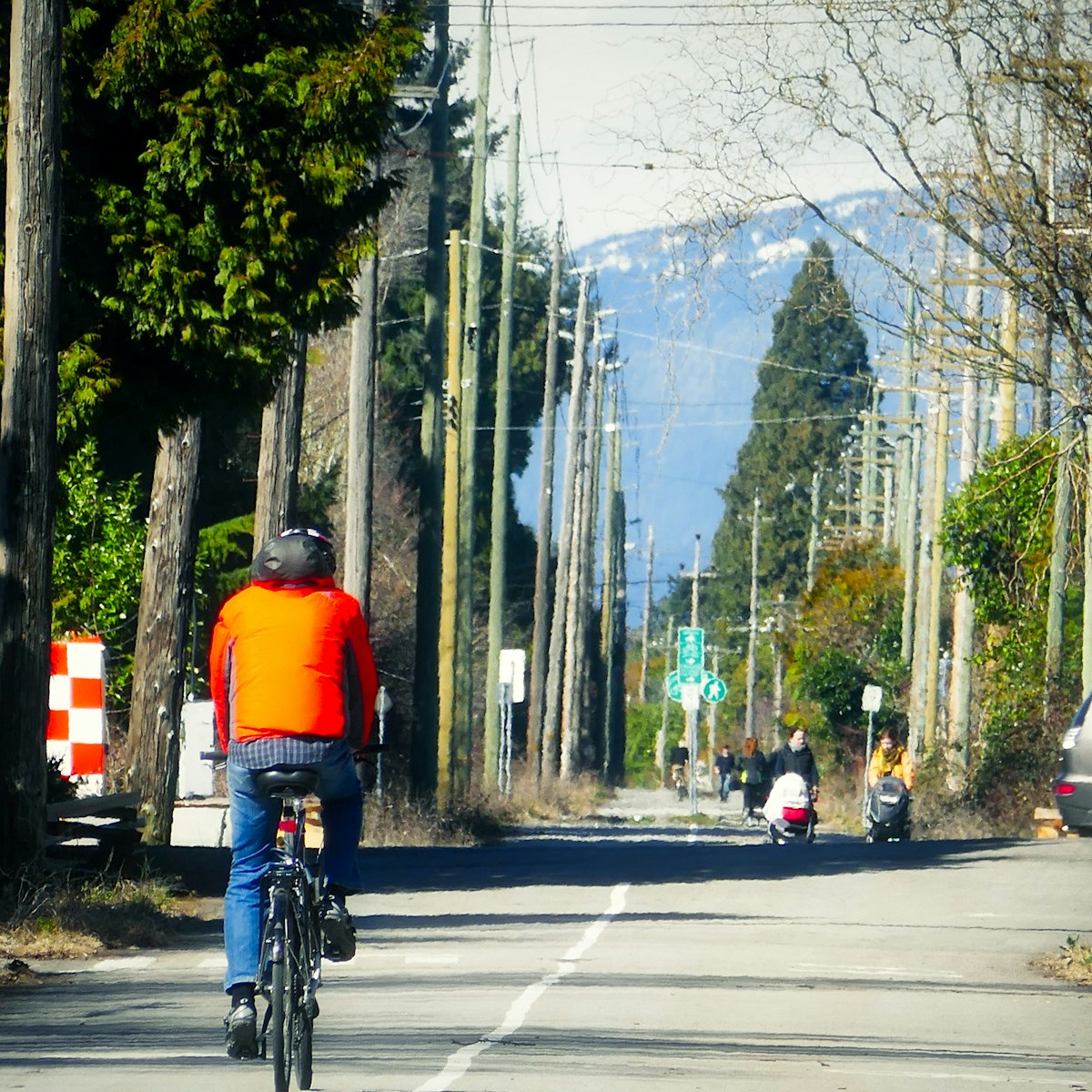One of North America’s largest urban green spaces, Stanley Park is revered for its dramatic forest-and-mountain oceanfront views. But there’s more to this 400-hectare woodland than looks. The park is studded with nature-hugging trails, family-friendly attractions, sunset-loving beaches and tasty places to eat.
Why you should go
Built in stages between 1917 and 1980, the park's 8.8km seawall trail is Vancouver's favorite outdoor hangout. Encircling the park, it offers spectacular waterfront vistas on one side and dense forest on the other.
You can walk the whole thing in roughly three hours or rent a bike to cover the route far faster. Keep in mind: cyclists and in-line skaters must travel counterclockwise on the seawall, so there's no going back once you start (unless you walk).
Also consider following the 25km of trails that crisscross the park's interior, including Siwash Rock Trail, Rawlings Trail and the popular Beaver Lake Trail (some routes are for pedestrians only). The Beaver Lake route is especially recommended; a family of beavers resides there and you'll likely spot them swimming around their large den.
The seawall also delivers you to some of the park's top highlights. About 1.5km from the W Georgia St entrance, you'll come to the ever-popular totem poles. Remnants of an abandoned 1930s plan to create a First Nations 'theme village,' the bright-painted poles were joined by some exquisitely carved Coast Salish welcome arches a few years back. For the full First Nations story, consider a fascinating guided park walk with Talaysay Tours.
Continue on to the nearby Nine O’Clock Gun (it fires at 9pm nightly) and Lumberman's Arch, which is a good spot to see Alaska cruise ships sliding past. From here, you can cut into the park to the popular Vancouver Aquarium or continue around the seawall; it gets wilder and more scenic as you pass under the Lions Gate Bridge and face down the Pacific Ocean.
Wildlife in Stanley Park
Stanley Park is studded with appeal for wildlife fans. Neat the W Georgia St entrance lies Lost Lagoon, which is a bird-beloved nature sanctuary – keep your eyes peeled for blue herons. Its perimeter pathway is also a favored stroll for wildlife nuts.
Plunging deeper into the park's more secluded trails, you'll also likely spot wrens, hummingbirds and chittering little Douglas squirrels. For an introduction to the area's flora and fauna, start at the Stanley Park Nature House. You'll find friendly volunteers and exhibits on wildlife, history and ecology – ask about their well-priced guided walks.
While they mostly give humans a wide berth, you might also come across a coyote or two; aggressive incidents with coyotes are rare. However, be cautious and treat them with respect and give them a wide berth as well.
Beaches in Stanley Park
Second Beach is a family-friendly area on the park's western side, with a grassy playground, an ice-cream-serving concession and a huge outdoor swimming pool. It's also close to Ceperley Meadows, where Fresh Air Cinema offers popular free outdoor movie screenings in summer.
For a little more tranquility, try Third Beach. A sandy expanse with plenty of logs to sit against, this is a favored summer-evening destination for Vancouverites.
Opening hours and other practicalities
The park is free to enter and open 24 hours a day. The park can be reached by taking bus 19 from downtown. There are additional fees for bike rentals and attractions in the park, like the Vancouver Aquarium.
In summer, the seawall is packed with visitors; arrive early morning or early evening if tranquil nature-communing is your bag. There are often summertime queues to enter the aquarium; try to make it one of your first stops when you arrive at the park.
Hotels near Stanley Park









